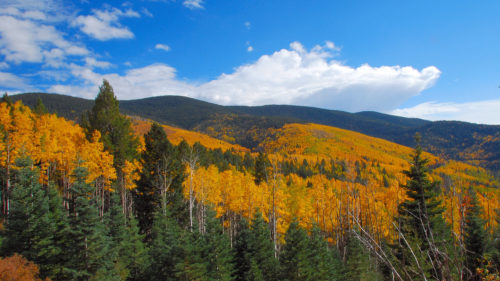They don’t adapt. For years, hunters told each other that energy development only impacted mule deer for a little while. That eventually, maybe it would take a few years, but the mule deer would adapt to the development and be back. Now we know; they won’t, they don’t, they aren’t coming back.
Mule deer are one of the most important game animals in New Mexico and across the West. Although the size of the mule deer population in New Mexico remains unknown, and destinies of mule deer populations are always uncertain given their migratory nature, but we know one thing for sure: energy development has caused a decrease in muleys across the West. The main reason for this decline is severe habitat fragmentation and a general loss of habitat quality.
A recent study, “Mule Deer and Energy Development–Long-term Trends of Habituation and Abundance” published in Global Change Biology scientists detailed a 17 year study of the impacts of energy development on mule deer populations. These scientists found that mule deer abundance declined by 36% during the period of development, despite aggressive mitigation efforts. This coincided with a 45% reduction in muley harvest, even though Wyoming took steps to increase hunting tag availability. The study clearly shows that energy development has a long term effect on mule deer behavior and displaces animals by functionally reducing their available habitat.
Another study, “Potential Effects of Oil and Gas Energy Development on Mule Deer in Western North Dakota” investigated the potential impacts of oil and gas energy development on mule deer resource selection, movements, physiological stress, and survival, in western North Dakota, 2013-2016. The study found high levels of avoidance behavior among mule deer where oil and gas development exists. This avoidance behavior results in stress on the muley populations which limits breeding and results in lower survival rates among the populations.
Although the studies were focused on Wyoming and North Dakota respectively, their findings can be applied to New Mexico. In our state, hunting is the main source of mule deer mortality and control of the hunting seasons and tags manages the muley population. But, habitat is the key to mule deer health. Muley population peaked in New Mexico in the 1940s-1970s. Habitat changes brought about by logging, overgrazing, and wildfires created a shrublands landscape favored by muleys. However, modern range management, reduced logging, and fire suppression have reduced mule deer habitat across New Mexico and the West.
The welfare of New Mexico muleys is influenced by other uses of the forests and rangelands, including energy development. Land use policies developed by land management agencies are critical to mule deer management. Only through the coordinated efforts of New Mexico Game and Fish, the Bureau of Land Management, and the Forest Service can New Mexico hunters be assured of a healthy, vital muley population.



